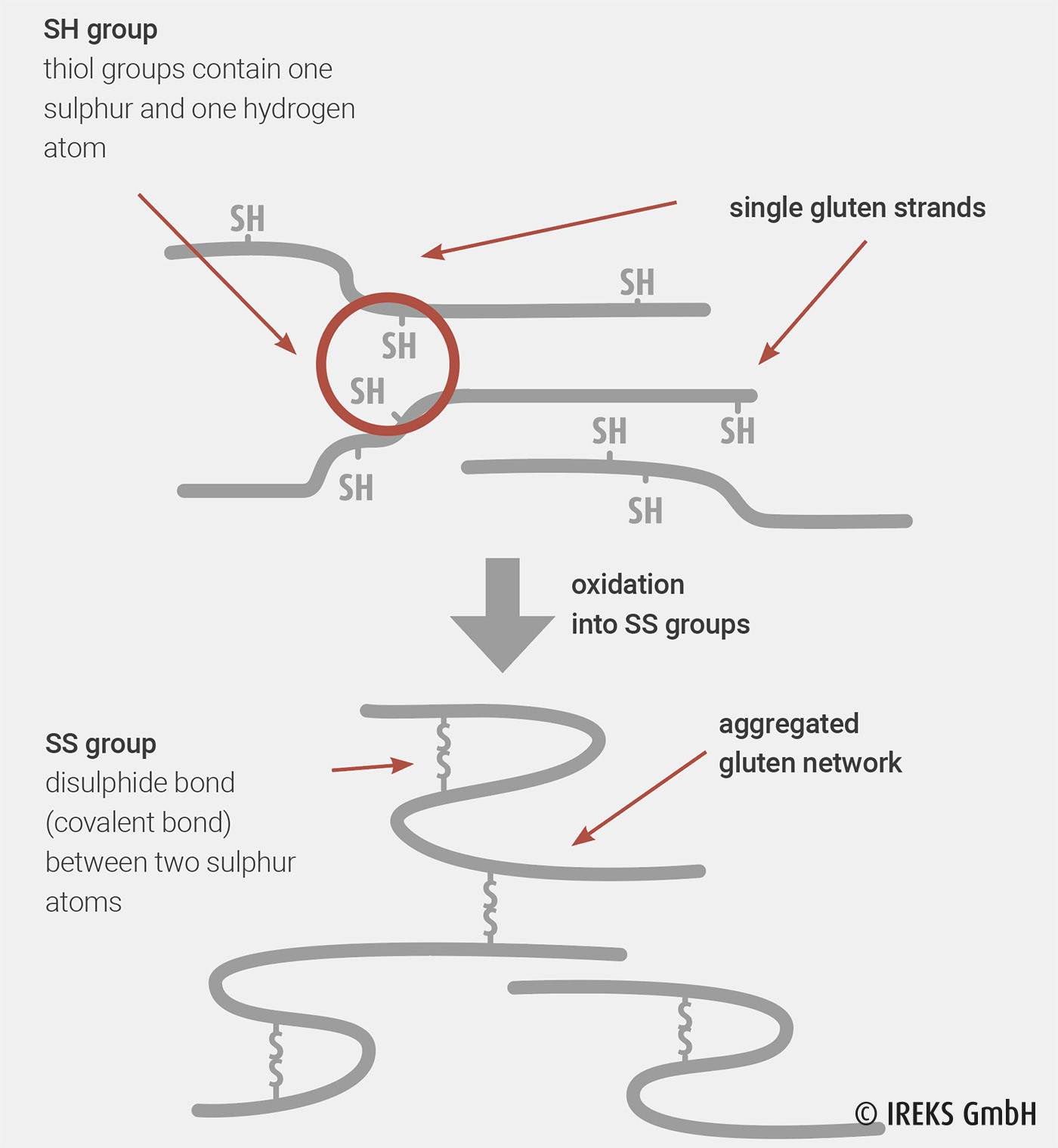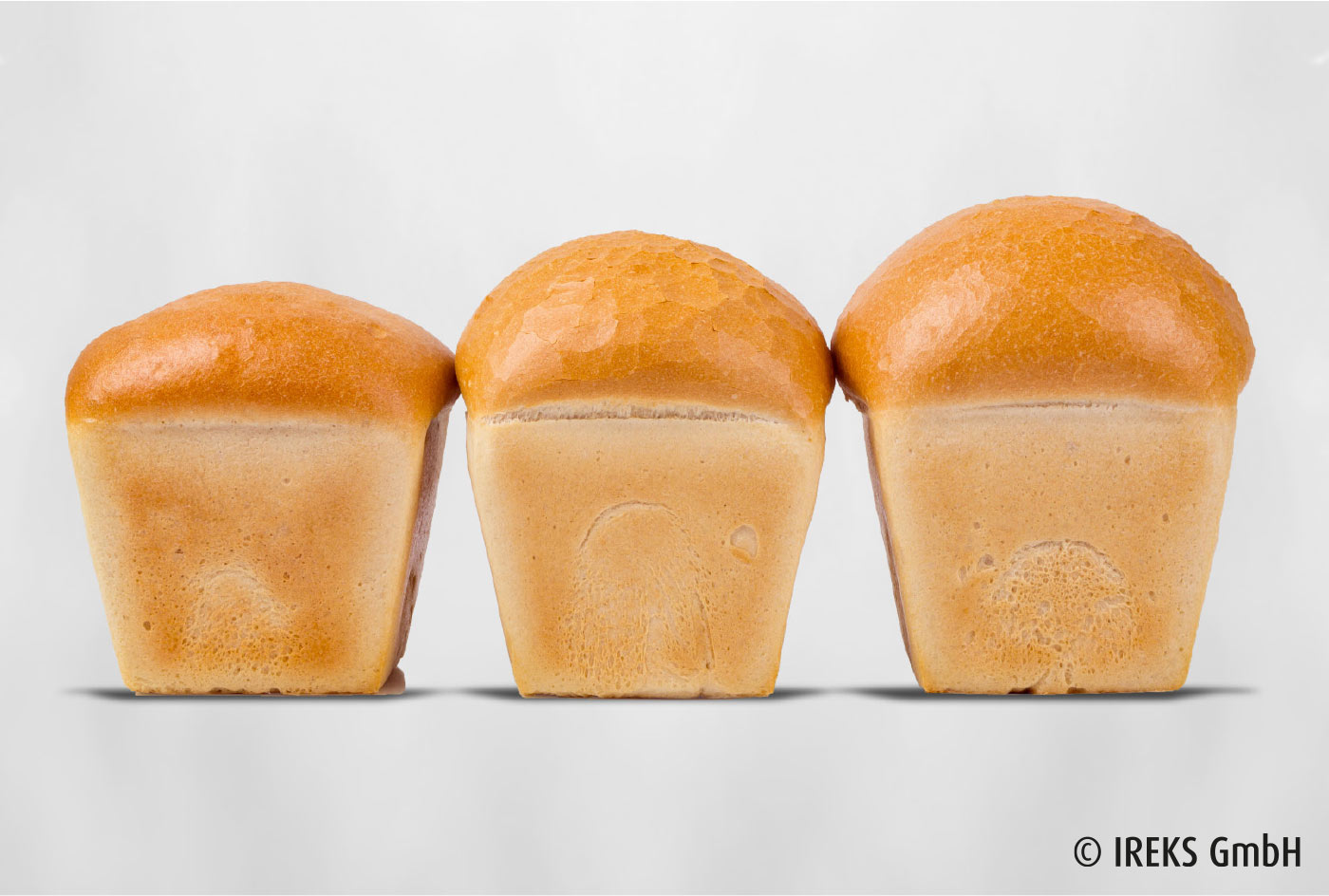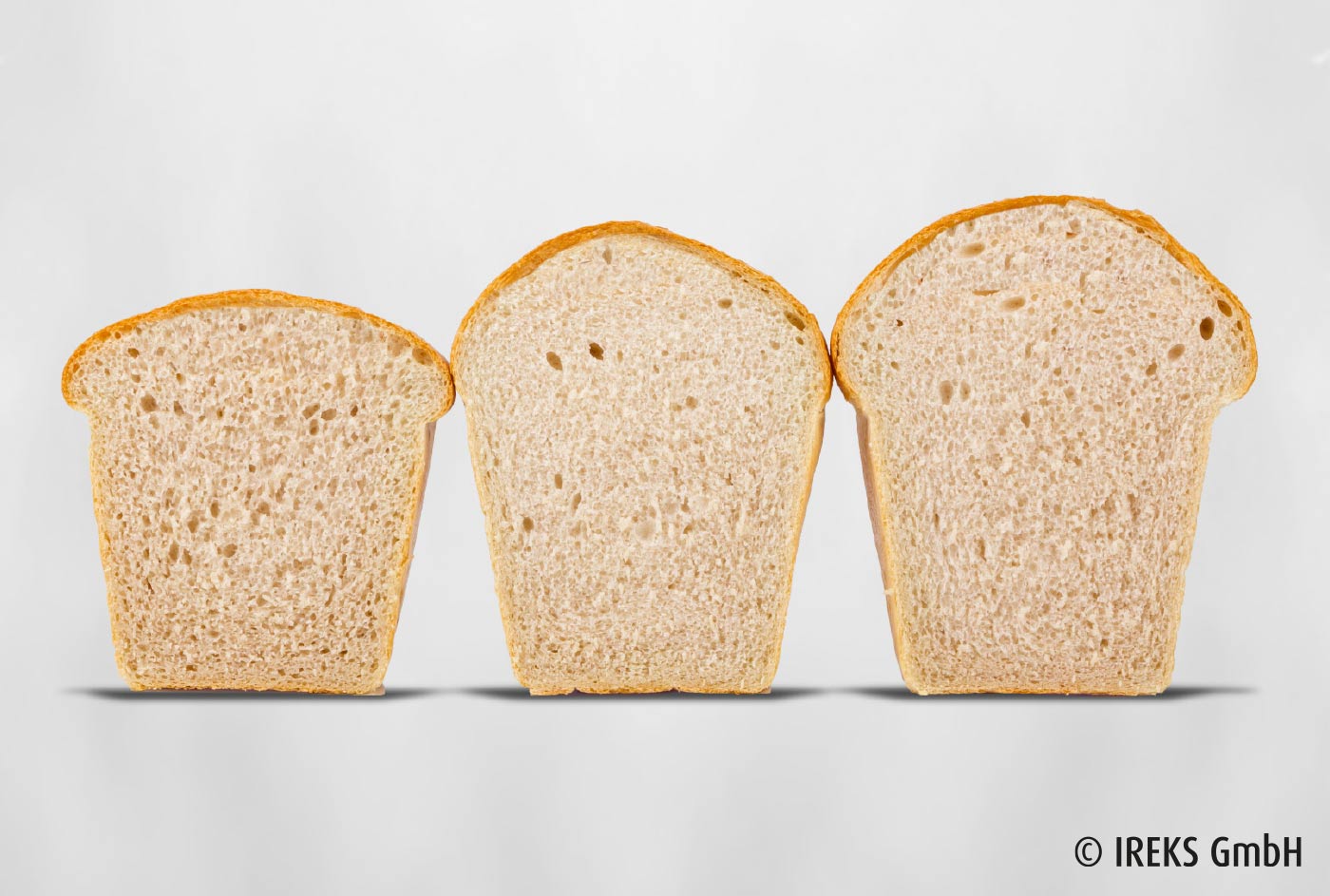Ascorbic acid is mostly already mixed with the flour during milling in a concentration of 0.5 – 3.0 g per each 100 kg flour (corresponds to 5 – 30 ppm) to have a more rapid flour maturity. Ascorbic acid is also an important component of improvers. In the dough, the ascorbic acid is, by means of an enzyme inherent to the flour, changed into dehydroascorbic acid (oxidant), which, in turn, oxidizes the glutathione contained in the flour into glutathione disulphide. By means of this process, a weakening of the gluten network by a reaction with glutathione is prevented and the stability and the gas retention property of the dough enhanced. Moreover, in the course of the mixing process and the subsequent bulk fermentation time, the formation of disulphide bonds which are structured intermolecularly and intramolecularly takes place, from which a strengthening of the gluten network results. Here, the stability and the gas retention property of the dough are enhanced. In the case of the baked goods, a better aeration and a larger volume of the baked goods is achieved in this way.



